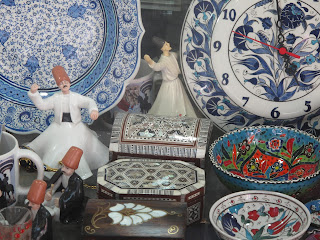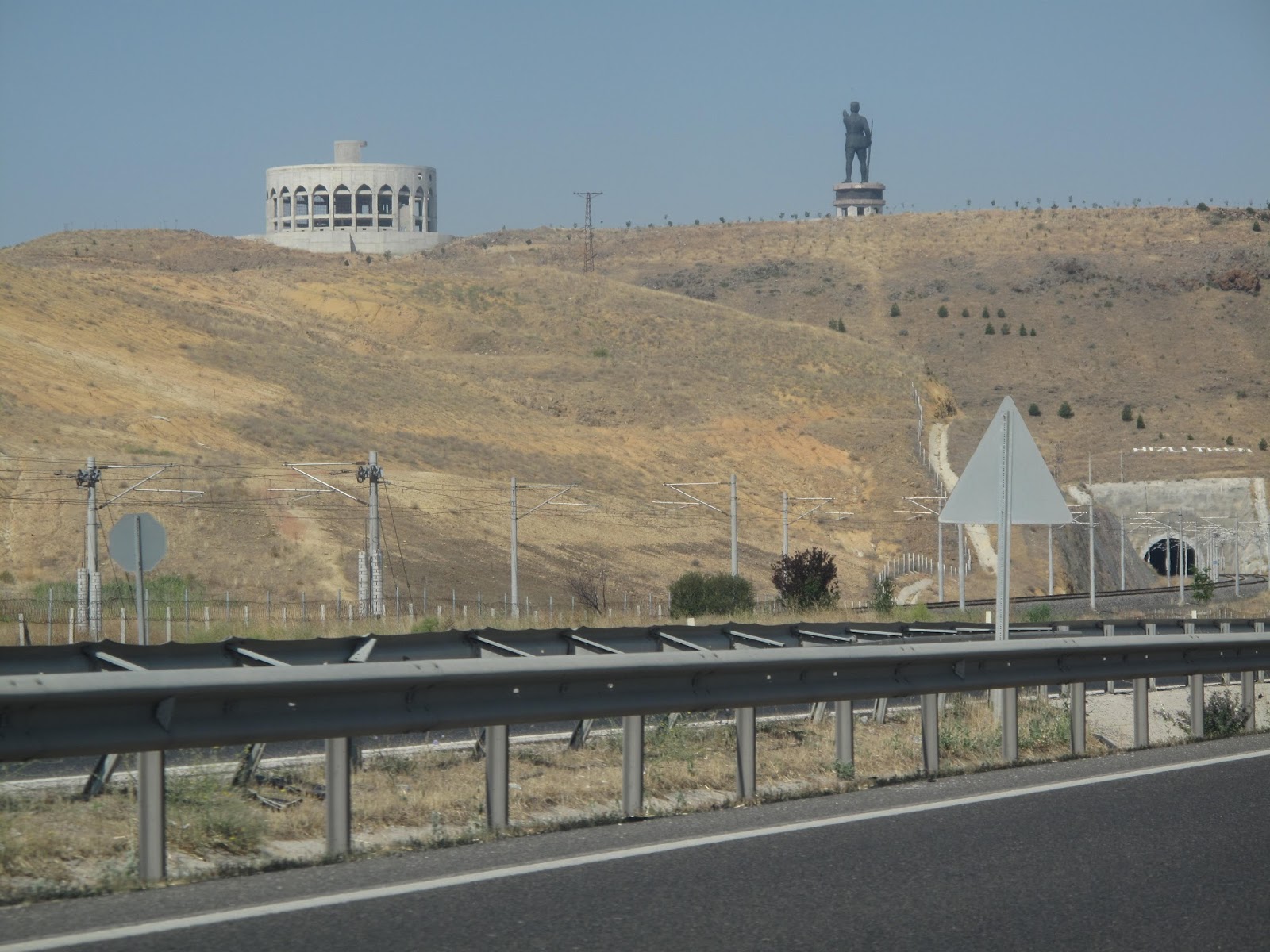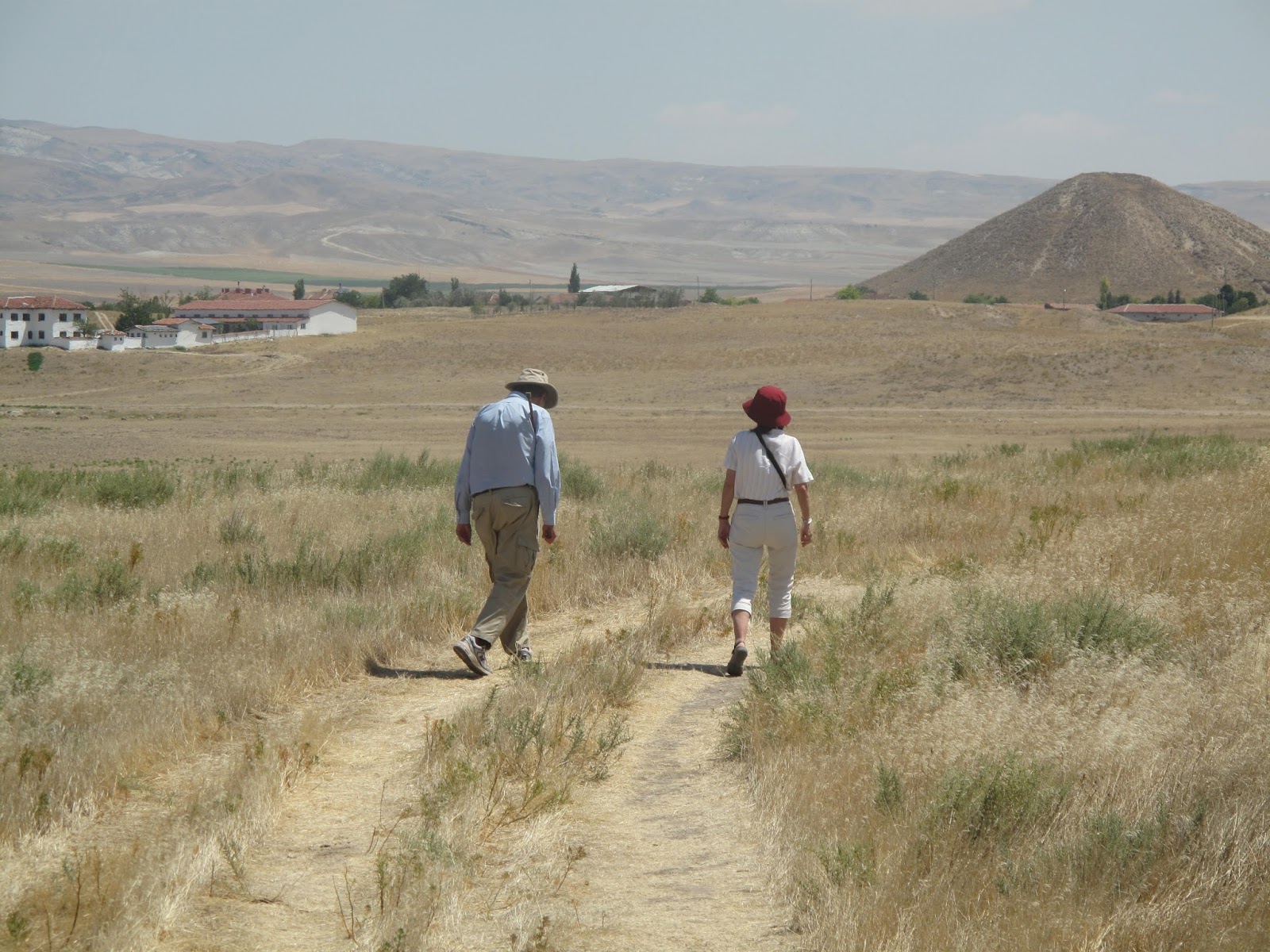Last
Sunday (November 10th) was the 75th anniversary of the death of Atatürk. Mustafa Kemal Atatürk is revered as the first
president of the Republic of Turkey, the man who set Turkey on a new course of
modernization, following the western model.
No rule is immune to criticism,
however. At the end of October, four
women MPs from the ruling AK Party appeared in Parliament wearing the Islamic
headscarf, despite the long-standing Atatürkist prohibition of such dress in
state institutions. The only previous
attempt, in 1999, provoked a scandal; MP Merve Kavakçı İslam was not only barred
from Parliament, but was eventually stripped of her Turkish nationality (the
excuse being that she was also a US citizen).
It is impossible for an American to
comprehend the ideological power of costume in Turkey. Why shouldn’t a Muslim woman be able to cover
her hair, should she so wish? But the
headscarf, indeed any type of veil, was banned early in the Republic as being a
symbol of the second-class status of women.
Atatürk was determined to free Muslim women from long-standing social
constraints. Indeed, middle and upper
class women of the generation of my grandmothers (reaching adulthood in the
1920s) were able to undertake a variety of professional careers only dreamed of
in the United States. They might be
practicing, pious Muslims, but they would not show that in the way they
dressed.
Legislating costume has
precedents. In 1829, Sultan Mahmut II
banned the turban as a symbol of backwardness; henceforth, Ottoman men would
wear the fez.
Sultan Mahmut II after his clothing reforms (1830)
The brimless fez was in
turn prohibited in the early Republic in favor of western-style brimmed hats,
again an exchange of one symbol for another (the Hat Law of 1925). A law of 1934 further restricted clothing
choice.
This past September the law banning
headscarves in government office and universities was finally changed. This new law emboldened the women MPs to
appear in Parliament with their heads covered, challenging Parliament’s own
dress code (just changed: the rule forbidding women MPs from wearing pants). The event was widely covered by the news
media. Despite acerbic remarks from some
secularist-minded center-left women MPs, the headscarves have been accepted.
In the later 1990s, while I was washing
up after a long, dusty day at the Kinet Höyük excavations, an employee of the
petroleum distribution company in whose cafeteria we took our meals noted with
admiration the shalvar I was wearing.
Shalvar are the traditional baggy pants of villagers, workmen, and, in
earlier Ottoman times, even gentlemen. I
had ordered several pairs to wear in the excavation trenches.
“Very comfortable,” I said. “You should get some yourself.”
“Impossible!” he said. “I am a child of Atatürk.” ["Atatürk’ün evladım."] He would never, could never wear such
clothing, associated with backwardness, everything the Republic was
combatting.
I thought this was silly, but then I
would never, ever consider wearing shalvar to my classroom, the library, or
anywhere else on my university campus, or even into the city.
Competitors on the ferry heading to the race start, on the European shore
Similarly, because of my own cultural
background as an American, I would never wear blue jeans when I am
teaching. Blue jeans were developed in 19th
century America as work pants, of tough, durable denim cloth with copper rivets
as reinforcements. Cowboys, factory
workers, and miners wore them. "Levis," my
grandparents called them, after Levi Strauss, the owner of the San Francisco
company that popularized them. When I was little, jeans were just beginning
their career as casual pants for everyone. Today still too casual, I’d say, for a teacher to wear.
The race is on! Waiting in a Çanakkale café
That’s my personal choice. I’m in favor of personal choice. I’m a great admirer of Atatürk, but I don’t think the government should restrict choice, even if, of course, certain institutions (the military, the police, schools) should have the right to impose dress codes (uniforms) they consider appropriate. But the precedent of a national dress code is firmly entrenched – and one Turkish friend, at least, wonders (partly in jest, but only partly) if some day the current government will pass a law requiring all women to cover their hair.
Where are the swimmers?
I wonder what the current AK Party government
thinks of events such as the annual swimming races across the Bosporus, the
Dardanelles, and from Meis (Megiste) island to Kaş. The vision of hundreds of competitors in
various states of near-nudity might be too much for them. I was in Çanakkale on August 30 (Victory Day,
a national holiday) to cheer on a friend who had signed up to swim across the
Dardanelles, along with some 600 others (400 Turks, 200 foreigners, mostly
British, American, Australian, and New Zealand; all ages, teens to seniors;
mostly men, but a goodly complement of women).
When we arrived, hundreds of competitors were milling around, all in
their swim suits and disposable slippers, waiting for the buses that would
take them to the ferry that would transport them to Eceabat on the European
shore, the starting point for the race.
The only competitor that headscarved women might approve was Bo Derek,
the American actress, in a head-to-ankles wet suit.
Watching the race
The race went off as planned, the 27th
year in a row. Gülen and I waved Tony
off on the ferry to Eceabat, then strolled around the town, had tea in a
crowded seaside café, and took up places by the waterfront to watch. After an hour or so little boats that tracked
the progress of the swimmers slowly approached the Asian shore. Suddenly we spotted the lead swimmers coming
in fast, neck and neck. They burst out
of the water, pulled up by race monitors onto the ramp up to the dock. The crowd cheered.
The first to finish. Hooray!
Competitors trickled in over the next hour. Some overshot the finish mark, and had to swim back against the current. A few would give up, picked up by the boats. Eventually Tony appeared, none the worse for wear, it seemed to me, but he made it clear that the course innovations made this year’s race more difficult than expected. We chatted with friends; spotted Bo Derek racing by, chased by cameramen and reporters; watched results posted on an electronic board; and went off for a nice lunch of salads, köfte (for famished Tony), and beer.
I had my head covered all the while, I
must admit – a light-weight canvas hat with an extra-wide brim. Nothing ideological . . . against the strong August sun, one needs
protection.
























